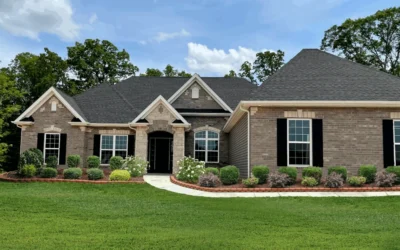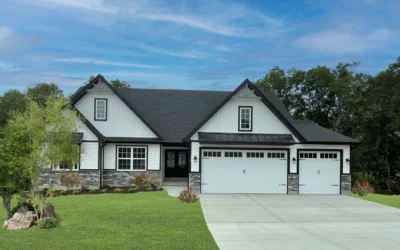Avoid these 4 mistakes with your trees.
You have just built your new home and are beautifying it with some new trees. Here are tips on how to care for your trees to prevent troubles.
Unless our trees have problems, we don’t fuss about them. So long as they’re green, leafy, flowery, and fruity, we let them be.
But when trees fail to leaf out in spring or drop the leaves they have; when foliage turns brown before autumn; when trees lean precariously or branches die; then suddenly our trees become the center of attention.
What’s wrong? The likely culprit is human error. Trees often get sick because they haven’t been planted and cared for properly.
The good news: It’s pretty easy to give your trees the care they need to stay healthy and fight off diseases. Here are the most common errors and how to avoid them:
Improper Pruning
Improper pruning can destabilize a tree, encourage the spread of disease, and even make it fall over.
Signs of bad pruning include:
- Tree is leaning more than usual.
- Tree looks top- or bottom-heavy.
- One tree is blocking the sun from another.
- Tree is too big for its space.
- Pruning cuts are jagged.
Pruning is as much art as science. A properly pruned tree looks balanced and beautiful; it feels comfortable — not squished into — its space; it lacks dead branches or ones that crisscross.
Pruning techniques — where and how — are specific to each species of tree. So before you make your first cut, consult a pruning manual.
Make sure your saws, loppers, and shears are clean and sharp to prevent disease.
Mulching Mayhem
Mulch helps protect trees (especially young ones) from stress and gives your yard great curb appeal. But more mulch is not necessarily better, and too little mulch does little to protect trees.
Signs of mulching mistakes:
- Mulch piled up against the tree trunk, volcano style, which can cause trunk rot and encourage infestation and disease.
- Mulch covering the tree’s root collar, where the trunk flares into the root system.
- Exposed roots.
Begin mulching about 6 in. from the tree base, and extend the mulch to the end of the tree’s drip line just beneath the end of the tree canopy. Start with 1 in. of mulch toward the base, building up to no more than 4 inches at the end of the mulch circle.
Use mulch only from reputable sources, not strange mulch piles that may contain material from diseased trees. To save money, make your own mulch from healthy lawn clippings, shredded leaves, branches, and bark.
Fertilizer Frenzy
A tree planted in a sunny location with good soil and covered with organic matter doesn’t need extra fertilizer: it makes its own food through photosynthesis.
Still, many homeowners mistakenly think their trees need an annual dose of fertilizer that adds minerals and nutrients to the soil. In fact, the opposite is true. Over-fertilizing can poison a tree’s root system, cause excessive and weak growth, and pollute watersheds.
Signs of over-fertilizing:
- Small or yellow foliage.
- Dead branches.
- Reduced growth.
- Salts on soil surface.
Many ailments — infestation, compacted soil, trauma, and nutrient deficiency — can cause a tree to show the same symptoms of over-fertilizing. So before you add fertilizer, test your soil to determine which, if any, nutrients your tree lacks. A good time to test soil is either before you plant, or every 3 years or so after planting.
If fertilize you must, add only the nutrients your tree needs, usually nitrogen, phosphorous, and potassium. Fertilize in early spring and fall; never fertilize during drought.
Planting Mistakes
Your new tree has so much potential. But if you plant a tree that doesn’t fit your hardiness zone; if you manhandle the little one and squeeze it into a hole that’s too narrow and too shallow; you may limit your tree’s future.
Signs of improper planting:
- Trees grow into utility lines or foundations.
- Scant or dry foliage.
- Stunted growth from inappropriate sun conditions.
- Dieback due to trauma at planting time.
You and your trees will be together for a long time. So when you select a species and location, consider the eventual size of the mature tree — the spread of its canopy and roots — not just the dimensions of the sapling. Plant trees away from overhead power lines and underground gas lines, and at least 15 feet away from the house (up to 35 feet for big trees).
When planting, dig a hole 3 to 5 times the diameter of the tree’s root ball and about 1 ft. deep. Make sure the root collar (flare) rests just above the soil surface. Don’t forget to water slowly and deeply until the root system is established.
CMS Homes offers over 20 new home plans located in 7 communities.
Read more: http://members.houselogic.com/articles/tree-care/preview/#ixzz30CwohaCb
Follow us: @houselogic on Twitter | houselogic on Facebook



0 Comments